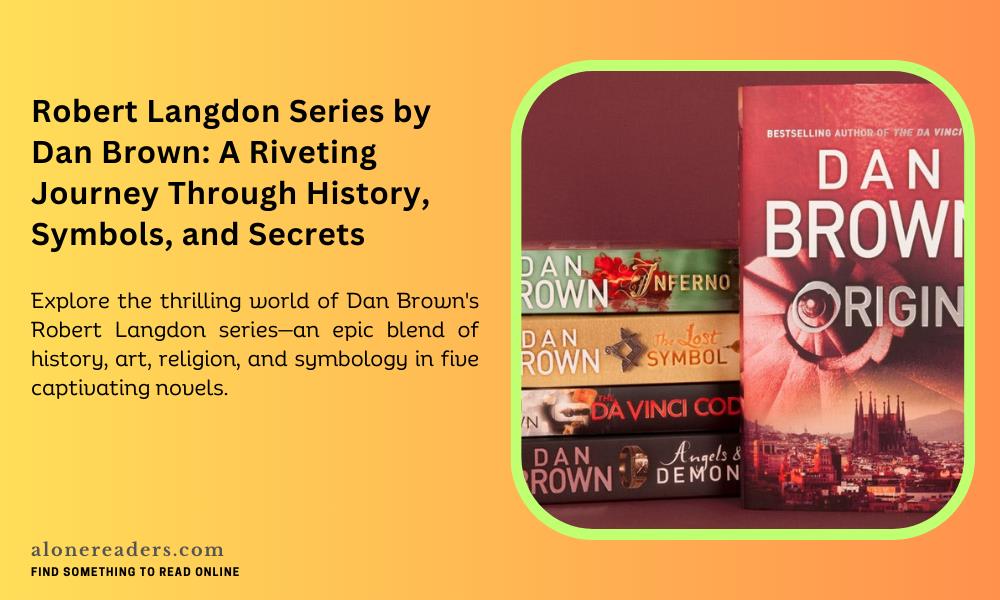
Dan Brown’s Robert Langdon series stands as one of the most commercially successful and widely discussed thriller franchises of the 21st century. Blending ancient symbology, cryptography, historical intrigue, and modern suspense, the series follows the adventures of Harvard symbologist Robert Langdon as he navigates secret societies, religious conspiracies, and world-threatening mysteries. From the heart of the Vatican to the museums of Paris and the cryptic architecture of Washington D.C., Langdon's quests unravel a thrilling web of secrets buried beneath the visible world. The series is composed of five novels—Angels & Demons, The Da Vinci Code, The Lost Symbol, Inferno, and Origin—each designed as a stand-alone yet interconnected thriller.
The first book, Angels & Demons, introduces Robert Langdon and plunges readers into the ancient conflict between science and religion. Set in Vatican City, the novel builds tension with a race against time to stop a terrorist plot involving antimatter. Brown’s ability to weave together Illuminati lore, papal election rituals, and scientific innovation forms a fast-paced and intellectually charged narrative. Though some critics debated the plausibility of the science presented, there is no denying the immersive experience and intellectual stimulation the book offers.
The follow-up, The Da Vinci Code, is arguably the most famous in the series, turning Dan Brown into a literary phenomenon. Here, Langdon is thrust into a murder investigation in the Louvre, leading to a chase across Europe to uncover a hidden truth about the Holy Grail and the bloodline of Christ. This book ignited global debate due to its controversial reinterpretation of Christian history and symbolism. With short chapters ending in cliffhangers and a plot that unfolds like a puzzle, The Da Vinci Code became a defining entry in the modern thriller genre. Despite criticism from theologians and historians for its speculative take on religious themes, the book’s cultural impact is undeniable, spawning a blockbuster film and becoming a gateway to historical thrillers for millions of readers.
The Lost Symbol, the third installment, shifts focus to Freemasonry and the secret history of the United States, centering around Washington D.C.’s symbolic architecture. While some fans found it less impactful than its predecessors, the novel still showcases Brown’s signature strengths—fast pacing, hidden codes, and philosophical undertones. The theme of unlocking human potential through ancient knowledge adds depth to the thriller structure, though the climax’s speculative elements may not satisfy every reader’s expectations. Still, the atmospheric setting and real-world historical references keep the suspense alive.
With Inferno, Brown returns to Europe, this time threading Dante Alighieri’s Divine Comedy into a contemporary bioterrorism plot. Set against the backdrop of Florence, Venice, and Istanbul, the book explores themes of overpopulation, moral philosophy, and genetic manipulation. Langdon suffers from amnesia, adding a psychological layer to the narrative. While the science and ethics of population control drew divided opinions, Inferno impressed with its art-infused scenery and philosophical complexity. The reinterpretation of classic literature into a modern threat exemplifies Brown’s knack for making the esoteric thrilling.
Finally, Origin pushes the series into futuristic territory, focusing on artificial intelligence and the age-old questions of "Where do we come from?" and "Where are we going?" Set in Spain and featuring Gaudí’s surreal architecture, the book pairs Langdon with an advanced AI named Winston. The narrative probes science versus religion in a contemporary context, offering a techno-thriller that departs from earlier religious conspiracies but maintains the philosophical and symbolic depth. Some longtime fans welcomed this evolution, while others felt the new direction lacked the intensity and historical gravitas of the earlier books. Nevertheless, it confirms Brown’s willingness to explore new intellectual terrain without abandoning his core formula of codes, secrets, and revelations.
What makes the Robert Langdon series enduring is not merely its thrilling plots but also its ability to ignite curiosity. Brown turns cities into characters, sculptures into puzzles, and ancient texts into roadmaps of discovery. Readers are invited to question the narrative of history, the boundaries of science, and the meaning of faith. Langdon himself is a compelling protagonist—not a typical action hero, but a cerebral guide whose calm intellect and scholarly insight carry the action forward. His reluctance to use violence and reliance on logic, symbols, and historical context to solve problems offer a refreshing contrast to gun-wielding leads in typical thrillers.
Of course, Dan Brown’s writing style—often criticized for formulaic structure, exposition-heavy dialogue, and overuse of cliffhangers—can divide readers. Yet, for many, these very traits contribute to the addictiveness of the series. The books are engineered for rapid reading, each chapter fueling the next, and the real-world locations and references ground the fiction in a compelling semi-reality.
The Robert Langdon series has also enjoyed immense popularity on the big screen, with Tom Hanks portraying the titular character in several film adaptations. Though the movies faced mixed critical reception, they expanded the reach of the series and reinforced Langdon’s image as a pop-culture icon.
In conclusion, Dan Brown’s Robert Langdon series is a masterclass in the intellectual thriller genre. It combines historical mystery, cultural exploration, philosophical debate, and pulse-pounding suspense into a gripping literary formula. Whether you're fascinated by secret societies, religious enigmas, or scientific dilemmas, these novels offer a captivating reading experience that transcends typical genre boundaries. With its global impact and continued relevance, the series secures its place as a cornerstone of modern popular fiction.